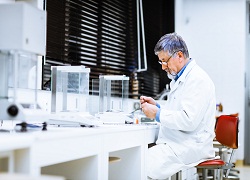 We’ve devised a method that ‘works’ well; the drawdowns are minimal, the losses are small and very manageable. Like any trading method it experiences short, but manageable losing streaks. We’ve back tested the method for approximately six months now and the question remains is this a long enough period in order to make a realistic judgement of the method and the overall trading system? How do we go about using the best statistical analysis available to apply to the data to forensically judge our system and what should we be looking for?
We’ve devised a method that ‘works’ well; the drawdowns are minimal, the losses are small and very manageable. Like any trading method it experiences short, but manageable losing streaks. We’ve back tested the method for approximately six months now and the question remains is this a long enough period in order to make a realistic judgement of the method and the overall trading system? How do we go about using the best statistical analysis available to apply to the data to forensically judge our system and what should we be looking for?
Firstly we’d have to decide if the back testing period of time is long enough based on what time frames we intend to trade off. For example a six month back test for a swing trading strategy is simply not enough time for our method and system to have experienced all the market conditions, such as break outs, major shift in fundamental policies – interest rate adjustments, or quantitative easing programmes (being tapered or increased).
We might want to increase our back test to several years if we’re looking to develop a swing trading strategy to include major collapses of confidence in the financial system. The logic would be to to take a system back to 2008 from 2014 to encompass just about every market condition we could envisage (for swing traders) over recent years.
However, if our trading system and method is a day trading system then perhaps a six month window is enough to make a judgement as to our method and system’s overall viability. We may test it on one security and if we plot the moves off, for example, a one hour time frame we may ‘take’ circa 400 trades during our back test. This would breakdown as approximately ten trades per week over the six month period, which should be enough to make an informed decision.
Alternatively we could look at a daily chart and after a search for the major news events that moved the market over a yearly period, then overlap those events with our one hour time frame to see how price reacted when major policy decisions, or high impact news events were published. Using this analysis we may then be assured that our day trading back test has endured and survived a period of intense volatility, perhaps due to a major news event breaking.
Once we’ve back tested we must then forward test live in the market place
Back testing can often prove to be inaccurate. Many in our community have spent months, if not years, back testing systems on paper only to find that they didn’t quite work as expected in forward testing and in the real market. Why this happens is for several reasons; market timing and psychological issues such as failing to understand how real time experiences will severely impact on our bottom line profitability. Lower time frames are particularly difficult to test because of slippage and spreads which will not show up in a back test where we might simply take the low and or high point of a candle as our entry or exit point. We should therefore move our back test to forward test and consider our forward test as an ‘incubation period’.
How long to incubate our forward test and do we ‘go live’ with real funds or forward test in demo?
Our next stage in forward testing is to decide if we’re going to test in real time with real cash, or are we going to demo trade for a short period or is there an alternative, could we do both? Let us explain…
We’ve decided that we’re going to forward test live, but instead of committing our usual 1% account size per trade we’ve decided to only risk 0.1% per trade during a two month forward test period and we expect to take circa 150 trades over that period of time. However, we’ve also taken the decision that we’re going to run a mirror trading system with our live forward test but in demo mode. We are going to shadow our real trades with trades in our demo account and with the demo account we’ve decided to increase our risk to 2%. This will be the only change to our strategy; everything else contained in the trading plan will remain the same. Stops, potential R:R etc.
Running a demo account alongside our temporary live account should in theory give us the best of both worlds. We get to test in real time with a very small risk on each live trade whilst the demo mirrors a very aggressive version of the same overall strategy in demo mode. Therefore if our forward live testing works well we may have every confidence that when we move up to real testing our overall strategy can bear the running of a higher risk ratio which should give us even more confidence in our method once we go fully live within our normal parameters.





